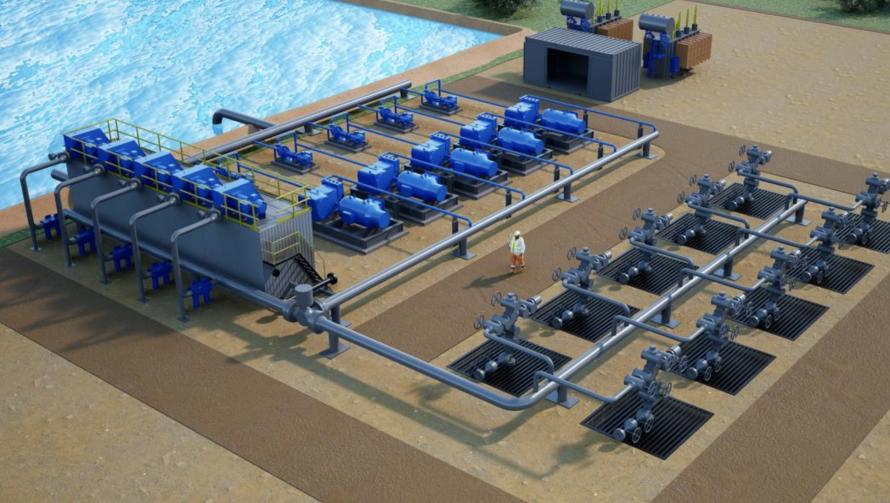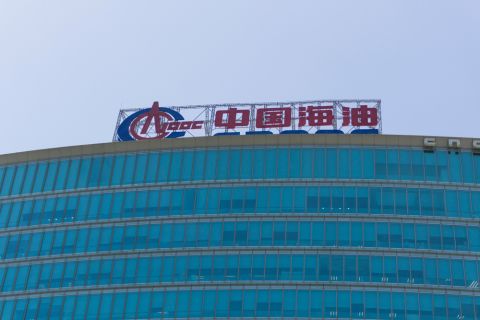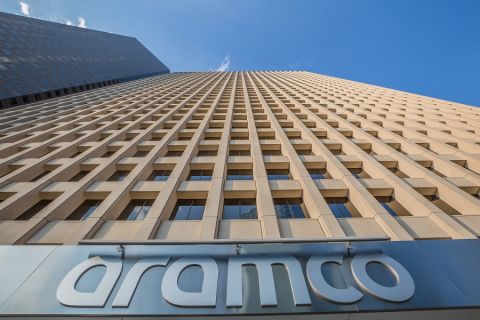
COP28, which runs until Dec. 12 in Dubai, will give the private sector—including those from the oil and gas industry—and other delegates an opportunity to chime in as the climate agenda is assessed following the 2015 signing of the Paris Climate agreement. (Source: Shutterstock)
Climate finance is among the issues taking centerstage as delegates converge upon Dubai for COP28, looking to reassess the global climate change agenda amid a higher cost of capital, continued geopolitical unrest and an insatiable energy appetite that renewables alone can’t fulfill.
COP28 kicked off Nov. 30 with a climate disaster funding victory as delegates set up a fund to help poorer countries address climate issues. That was topped Dec. 1 with a $30 billion commitment announced by the United Arab Emirates (UAE), including $25 billion to scale climate strategies and $5 billion to improve access to climate funding for the Global South. Called ALTÉRRA, the commitment marks the largest private investment vehicle for action on climate change. It aims to mobilize $250 billion globally by 2030.
“ALTÉRRA provides a transformational solution for attracting private capital. Its scale and structure will create a multiplier effect in climate focused investment, making it a vehicle like no other,” COP28 President Sultan Al Jaber said in a statement. “Its launch reflects the COP Presidency’s Action Agenda and the UAE’s efforts to make climate finance available, accessible and affordable.”
The Conference of the Parties to the UN Framework Convention on Climate Change, or COP, brings together world leaders from the EU and nearly 200 countries each year to work together on finding solutions to climate change. COP28, which runs until Dec. 12 in Dubai, will give the private sector—including those from the oil and gas industry—and other delegates an opportunity to chime in and showcase technologies as the climate agenda is assessed following the 2015 signing of the Paris Climate agreement.
At COP21 in 2015, world leaders agreed to limit global warming to 1.5 C compared to pre-industrial levels. Since then, the world worked to bring technologies to scale and hit targets as energy security, energy affordability and decarbonization efforts were impacted by a global pandemic, capital constraints and geopolitics. Focus this year will be on closing the gaps to 2030.
Capital investment needs
According to the Energy Transitions Commission (ETC), a coalition of energy leaders committed to net-zero emissions, an average annual capital investment of $3.5 trillion will be needed until 2050 to build a net-zero economy. To hit 2030 targets, capital investment will need to triple from today’s levels. The estimates vary by country.
“In high-income economies and China, annual investments to build a net-zero economy will need to reach roughly double today’s levels by 2030. Investment in middle- and low-income countries represents the biggest challenge, requiring a 4-fold increase from today’s levels to around $900 [billion] a year by 2030,” the ETC said. “Financing the transition in middle- and low-income countries will also require a significant scale up in international financial flows, led by Multilateral Development Banks (MDBs), together with changes in MDB strategy and approach, which can help mobilize greatly increased private investment.”
Policies and incentives from governments—including the Inflation Reduction Act in the U.S., REPower in the EU and China’s 14th Five-year Plan for Renewable Energy—have given lower-carbon initiatives a boost. And, private investments have increased. The International Energy Agency reported in May that for every dollar invested in fossil fuels, about $1.70 is going into clean energy.
Still, more is needed and capital is not the easiest to come by.
Simplifying the process to access capital would be huge, Guillermo Sierra, vice president of strategic initiatives-energy transition for Nabors, told Hart Energy. It takes time to get some technologies to a point where the government can dole out funding.
“One of the things that hopefully comes out of COP is for capital to actually start flowing from these incentives to the actual company in workable grants and things that are not so constrained or take so much effort to get that you’re almost spending the entire grant getting the grant,” said Sierra, who is among the COP28 attendees.
Nabors is participating in several speaking engagements at COP28, highlighting the importance of not only geothermal energy and concentrated solar power (CSP)—two areas in which the company has made investments—but the need for all forms of energy.
“It’s not just geothermal. It’s not just CSP. It’s not just photovoltaic. It’s not just wind. It’s the mixture of things,” Sierra said. “The energy hubs of the future look like a combination of different inputs of renewable sources that work when they can work best and deliver what we need in terms of energy. And, energy doesn’t only mean electrons. Energy means fuels, heat and hydrogen.”
Transition takes time
This is the first year COP will do a global stocktake to assess countries’ progress toward meeting the Paris Climate Agreement goals. Sierra, like others, realizes the world is not on track to meet emissions reduction goals, he said it’s important to keep moving forward and not get depressed about where we are today. Transitioning to cleaner forms of energy takes time, he said.
“As long as we’re not investing in things that just don’t work at all, there’s going to be room for us all,” Sierra said. “We need to try to be as supportive as possible of some of these ventures and these companies to help them scale and grow.”
Houston-based Sage Geosystems, which specializes in geothermal and energy storage, is among the startups that Nabors is backing. Sage Geosystems CEO Cindy Taff is also among the COP28 delegates, invited by Project Innerspace after being named ‘Startup of the Year’ during the PIVOT 2023 conference.
Taff said she has noticed some countries backing off of their climate commitments due to challenges. However, she pointed out that having challenging goals is a good thing.
“You may not meet those challenging goals, but if you get really close to them, then you’re doing, you know, better than what you thought,” Taff told Hart. “What COP28 or any of these COP meetings allow is for people to reassess where the technology is, how quickly you can develop this technology, how quickly you can you can move that technology to commercialization. Quite frankly, when you’re talking about the energy transition, it is a hardware problem. It’s not a software problem.”
Unlike software challenges that can be addressed quickly, hardware requires equipment, infrastructure, money and time.
“People just need to realize that there are a lot of good technologies that are being developed out there, but it just takes time,” Taff said. She added wind and solar have done a great job at greening the grid, but geothermal energy storage solutions can be an effective solution to intermittency.
Sage is currently in a Series A raise for its first power plant in the U.S. The company has landed a lead investor, a midsized oil and gas company, and plans to close by the end of 2023, she said.

Global challenge
Lowering emissions to slow climate change is a global effort.
However, “the climate problem is vexing because the ability of the world to hit the climate targets set for itself in the Paris Agreement really hinges on our ability to develop low carbon economies around the Global South,” Joseph Majkut, director of the Center for Strategic & International Studies’ Energy Security and Climate Change Program, said on a recent webinar.
The world will miss its targets if the issue isn’t solved, he said.
Efforts are underway. The United Arab Emirates and Germany each committed $100 million to the fund to assist developing countries, while the U.K. committed $50.5 million and $252.7 million for other arrangements; Japan, $10 million and the U.S., $17.5 million, COP28 said.
The fund is open for other countries to make pledges.
Majkut said he looks forward to seeing how well a different political presidency at COP will be in building a big enough coalition to address the problem and what private capital from the West will be willing to do.
Jon Alterman, director of the CSIS Middle East Program, added that the Gulf states are interested in investing.
“What I hear from people who engage with them…is they pride themselves on being skillful investment bankers. They evaluate deals. They evaluate projects,” Alterman said. “They’re really interested in getting in the weeds on it. Is there a return here? When push comes to shove, is there an investment banking-based solution to some of these issues?”
He questioned whether the UAE would be able to shape “an increasingly ragged” climate change conversation and create more coherence on difficult issues.
These issues include the role of fossil fuels.
“I know there are strong views about the idea of including language on fossil fuels and renewables in the negotiated text,” Al Jaber said Nov. 30 in his opening plenary speech. “We have the power to do something unprecedented. I ask you to work together. Be flexible, find common ground, come forward with solutions and achieve consensus. And never lose sight of our North Star of 1.5 C, because that is what I am going to stay laser focused on.”
Recommended Reading
CNOOC Makes 100 MMton Oilfield Discovery in Bohai Sea
2024-03-18 - CNOOC said the Qinhuangdao 27-3 oilfield has been tested to produce approximately 742 bbl/d of oil from a single well.
Proven Volumes at Aramco’s Jafurah Field Jump on New Booking Approach
2024-02-27 - Aramco’s addition of 15 Tcf of gas and 2 Bbbl of condensate brings Jafurah’s proven reserves up to 229 Tcf of gas and 75 Bbbl of condensate.
Shell Brings Deepwater Rydberg Subsea Tieback Onstream
2024-02-23 - The two-well Gulf of Mexico development will send 16,000 boe/d at peak rates to the Appomattox production semisubmersible.
CNOOC Finds Light Crude at Kaiping South Field
2024-03-07 - The deepwater Kaiping South Field in the South China Sea holds at least 100 MMtons of oil equivalent.
For Sale, Again: Oily Northern Midland’s HighPeak Energy
2024-03-08 - The E&P is looking to hitch a ride on heated, renewed Permian Basin M&A.






